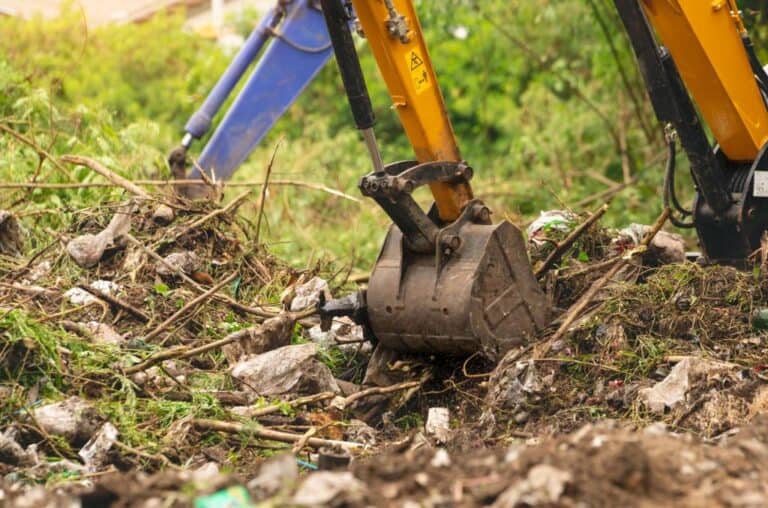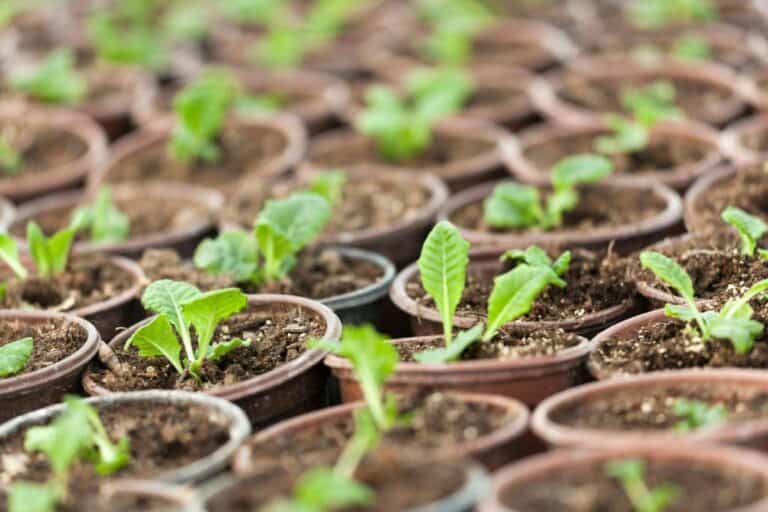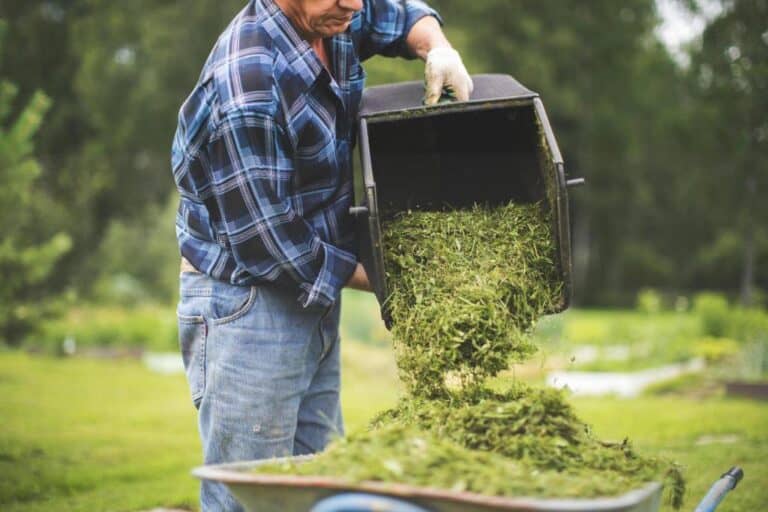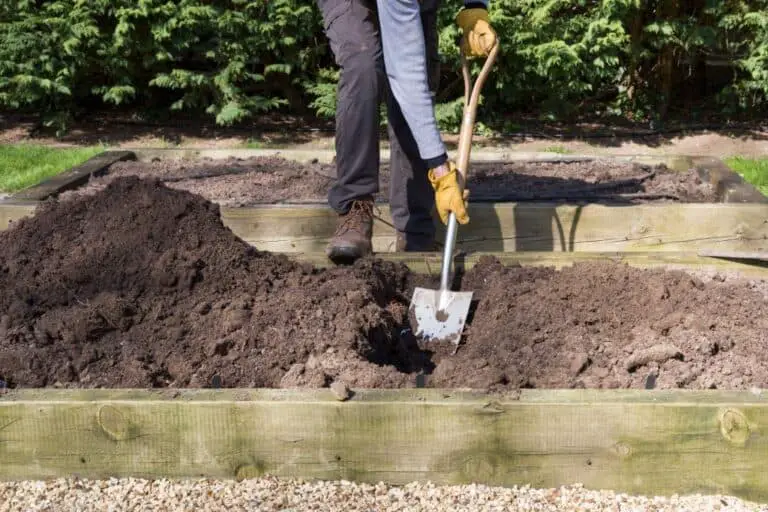Which Farming Practice Degrades Soil and Reduce Soil Fertility?
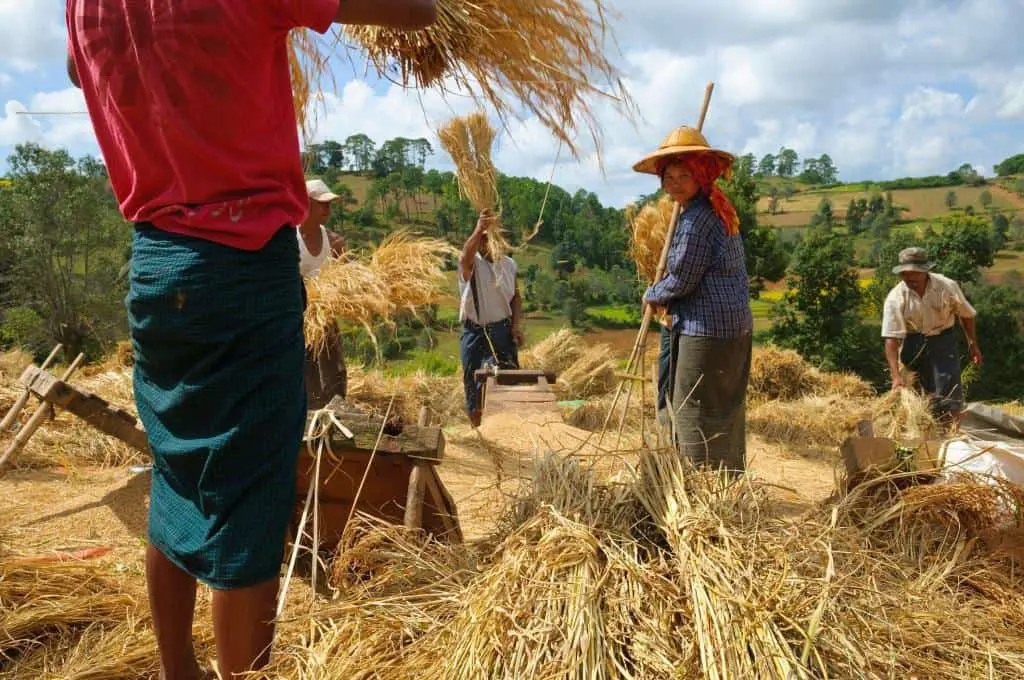
In the realm of agriculture, where the earth’s resources intertwine with our sustenance, the health of the very ground beneath our feet holds paramount importance. Soil, often taken for granted, is a living entity teeming with microcosmic life that sustains the macrocosm of crops and ecosystems.
However, not all farming practices tread lightly upon this intricate foundation. As we delve into the world of agriculture’s impact on soil, we uncover a critical question: Which farming practices contribute to the degradation of this vital resource, ultimately diminishing its fertility?
In our pursuit of abundant harvests and food security, certain farming methods have emerged as culprits in the ongoing drama of soil health. As we embark on this exploration, we will journey through the intricate web of monocropping, the alluring but potentially perilous realm of synthetic fertilizers, and the profound effects of deforestation.
We will traverse the landscapes where inadequate irrigation, unsustainable land use, and poor crop rotation play their parts. Together, we will illuminate the practices that, often unwittingly, degrade soil and undermine its ability to nourish future generations. Let us venture forth and unlock the secrets that lie beneath our very feet!
Introduction to Soil Degradation and Fertility Loss
Soil degradation refers to the decline in soil quality and health, leading to reduced productivity and ecological imbalance. One of the main contributors to this degradation is unsustainable farming practices. These practices often deplete essential nutrients, disturb soil structure, and disrupt the delicate balance of microorganisms that support plant growth.
Soil fertility, on the other hand, relates to the soil’s ability to sustain plant life and provide nutrients necessary for healthy crop growth. When soil fertility diminishes, crop yields decrease, and the overall health of the ecosystem is compromised.
How to Check Soil Degradation and Fertility
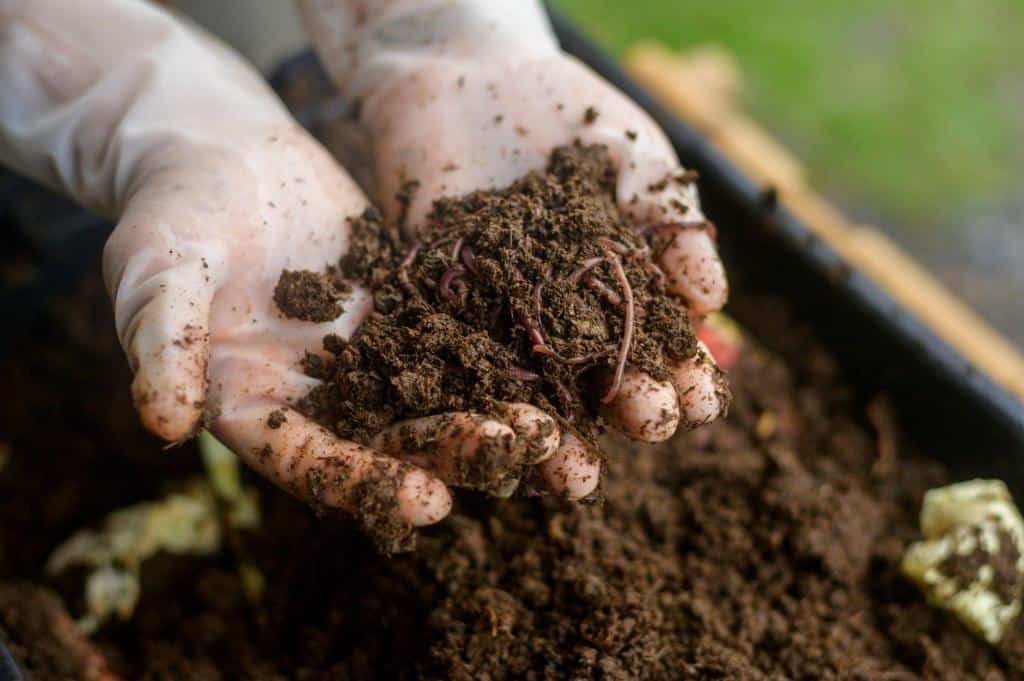
Assessing soil degradation and fertility is pivotal for maintaining productive land and sustainable agriculture. Employing a variety of methods, farmers and land managers can gain valuable insights into the health of their soil.
- Soil Testing: Using soil testing kits or lab analysis, you can delve into essential soil characteristics. Nutrient levels, pH balance, and organic matter content can be quantified, guiding appropriate fertilization and soil amendment practices.
- Visual Inspection: An initial step involves a hands-on observation of the soil’s physical traits. Pay attention to color variations, texture, and structure. Vibrant, crumbly soil signifies robust soil fertility, while pale and clumped soil could indicate degradation.
- Infiltration Test: By pouring a measured amount of water onto a small area of soil and timing how quickly it absorbs, you can infer the soil’s ability to hold water. Slow absorption might point to compaction or reduced porosity, impeding root growth.
- Earthworm Count: Earthworms serve as miniature soil engineers. Their presence hints at a well-structured, nutrient-rich environment. These creatures facilitate nutrient cycling and aeration, both crucial for fertile topsoil.
- Remote Sensing: Modern technology offers satellite-based monitoring of vegetation vigor. Unhealthy vegetation in specific areas could signal soil degradation, prompting targeted intervention.
By combining these methods, you can gauge soil quality comprehensively, allowing for informed decisions that promote robust crop growth and sustainable land management.
Types of Farming Practices that Degrade Soil
1. Monoculture Farming
Monoculture farming involves growing the same crop year after year on the same plot of land. While this practice may seem efficient and straightforward, it puts a significant strain on the soil. Specific crops absorb particular nutrients from the soil, causing an imbalance and depleting those nutrients. Over time, the soil becomes exhausted and less capable of supporting healthy plant growth.
2. Overuse of Chemical Fertilizers
Chemical fertilizers, while providing a quick nutrient boost to crops, often lead to long-term negative effects on soil fertility. Continuous use of these fertilizers disrupts the natural nutrient cycles and reduces the soil’s ability to retain moisture, making it more susceptible to erosion.
3. Excessive Tilling and Plowing
Tilling and plowing, common practices to prepare the soil for planting, can disrupt its structure. While these techniques were initially used to control weeds and loosen the soil, overuse leads to soil compaction, reduced aeration, and increased erosion.
4. Deforestation and Unsustainable Land Use
Clearing forests for agriculture disrupts the natural ecosystem and exposes the soil to erosion by removing the protective layer of vegetation. Additionally, unsustainable land use practices, such as improper irrigation methods and poor crop rotation, accelerate soil degradation.
5. Irrigation Mismanagement Leading to Salinization
Inadequate irrigation practices can result in the accumulation of salts in the soil, a process known as salinization. The buildup of salts negatively impacts plant growth, reducing crop yields, and diminishing soil fertility.
Excessive Use of Synthetic Fertilizers and Soil Degradation
Synthetic fertilizers, created to bolster crop growth and increase yields, have become a cornerstone of modern agriculture. These fertilizers contain concentrated nutrients like nitrogen, phosphorus, and potassium, which are essential for plants’ nourishment. The allure of higher yields led to their widespread application, aiming to meet the demands of a growing global population.
However, an overreliance on synthetic fertilizers can inadvertently degrade soil health. While these fertilizers provide an immediate nutrient boost, their excessive use can disrupt the delicate balance of the soil ecosystem. Microorganisms that aid in nutrient cycling and organic matter decomposition might dwindle due to the chemical impact, leading to long-term fertility decline. The soil’s physical structure can also be compromised, causing increased vulnerability to erosion and reduced water retention.
Furthermore, the environmental repercussions of excessive fertilizer use are significant. Runoff from fields carries excess nutrients into water bodies, triggering harmful algal blooms and “dead zones” where aquatic life struggles to survive. Nitrous oxide, a greenhouse gas more potent than carbon dioxide, is released from nitrogen-rich fertilizers, contributing to climate change. Balancing the benefits of synthetic fertilizers with sustainable practices is essential to preserving soil fertility and safeguarding the environment.
Environmental Consequences of Soil Degradation
Soil degradation has far-reaching environmental consequences that extend beyond the farm fields:
- Loss of Topsoil and Nutrient Depletion
Erosion and mismanagement lead to the loss of the nutrient-rich topsoil, reducing the soil’s ability to support plant growth and retain water. - Increased Vulnerability to Pests and Diseases
Depleted soil is less resilient, making crops more susceptible to pest infestations and diseases. - Water Pollution and Eutrophication
Soil degradation contributes to water pollution as eroded soil particles, along with chemical residues, enter water bodies. This can lead to eutrophication, which causes harmful algal blooms and disrupts aquatic ecosystems. - Contribution to Greenhouse Gas Emissions
Soil degradation releases stored carbon into the atmosphere in the form of carbon dioxide and methane, contributing to climate change. - Impact on Biodiversity and Ecosystem Services
Healthy soil supports diverse plant and animal life, and soil degradation can disrupt ecosystem services such as pollination and nutrient cycling.
Social and Economic Implications of Soil Degradation
The impact of soil degradation extends to society and the economy:
- Effects on Food Security and Availability
Soil degradation threatens food security by reducing agricultural productivity and potentially leading to shortages and higher food prices. - Economic Losses for Farmers and Agricultural Industries
Reduced crop yields result in financial losses for farmers and agricultural businesses, affecting livelihoods and economies. - Land Degradation and Rural Livelihoods
Soil degradation may force farmers to abandon land or move to more productive and fertile soil areas, affecting rural communities and traditional ways of life. - Impact on Global Trade and Food Prices
Soil degradation in one region can have ripple effects on global food supply chains and prices. - Role of Government Policies and Subsidies
Government support and policies play a crucial role in promoting sustainable farming practices and mitigating soil degradation through subsidies and incentives.
Can Soil Fertility Be Restored After Degradation?
Let’s talk about soil’s comeback story – because yes, soil fertility can absolutely stage a remarkable return even after a bout of degradation. Think of it like a rejuvenating spa day for the Earth. The magic lies in a series of smart, sustainable moves that breathe new life into the soil.
First up, meet the organic matter squad. When we say “organic,” we’re not just talking about your favorite produce aisle. We’re talking about stuff like compost, manure, and crop residues. These goodies are like a buffet for the soil’s microscopic workforce. They munch away, breaking down these organic materials into precious nutrients that plants adore. So, step one in the restoration journey? Amp up the organic matter content in the soil.
But wait, there’s more! Crop rotation swoops in like a superhero, preventing soil fatigue. Imagine doing the same workout every day – your muscles would tire out, right? Well, soil can get exhausted too, especially if it’s growing the same crop year after year. Crop rotation shakes things up.
It’s like sending a new team to the field, each with different nutrient needs and contributions. This variety dance helps balance out the soil’s nutrient levels and prevents it from becoming a one-trick pony.
| Soil Restoration Practices | Benefits |
| Adding organic matter | Enhanced nutrient availability |
| Implementing crop rotation | Reduced soil fatigue |
| Reducing chemical inputs | Improved microbial activity |
Lastly, chemical inputs take a backseat. It’s not that they’re entirely bad – they’re just like the seasoning in a recipe. A little goes a long way. Overloading the soil with chemicals disrupts its natural harmony, affecting everything from beneficial microbes to earthworms. By scaling back on chemical use, we give the soil a chance to recalibrate and welcome back its army of underground helpers.
Sustainable Farming Practices for Soil Conservation
Addressing soil degradation requires a shift towards sustainable farming practices that protect and enhance soil health:
1. Crop Rotation and Diversification
Rotating crops and diversifying plant species help maintain soil fertility by preventing the depletion of specific nutrients. Different crops have varying nutrient requirements, and rotation breaks pest cycles, reducing the need for chemical pesticides.
2. Organic Farming and Composting
Organic farming avoids the use of synthetic chemicals, focusing on natural processes to improve soil fertility. Composting organic materials enriches the soil with nutrients and improves its structure.
3. Agroforestry and Windbreaks
Integrating trees and shrubs into agricultural landscapes through agroforestry provides multiple benefits. Trees protect against soil erosion, promote biodiversity, and improve soil fertility through nutrient cycling.
4. Conservation Tillage and Minimum Tillage
Reducing or eliminating tillage helps retain soil structure, organic matter, and moisture. Conservation tillage practices like no-till or minimum tillage minimize soil disturbance while still preparing the land for planting.
5. Efficient Water Management and Irrigation Techniques
Effective irrigation systems and water management practices reduce water waste and lessen the effects of excessive irrigation on soil salinization.
Advancements in Agricultural Technology for Soil Health
Modern agricultural technology offers innovative solutions to promote soil health and sustainable farming practices:
| Advancement | Description |
| Precision Agriculture and Soil Mapping | Utilizing GPS and sensors to create detailed soil maps, allows farmers to tailor inputs precisely for optimal soil health and crop growth. |
| Use of Cover Crops and Green Manure | Planting cover crops or green manure between main crops helps prevent erosion, enhances soil fertility, and improves water retention. |
| Biotechnology for Drought and Pest Resistance | Developing crops with increased tolerance to drought and pests reduces the need for chemical inputs, benefiting soil health. |
| Nanotechnology for Targeted Nutrient Delivery | Nanoparticles can deliver nutrients to plants more efficiently, minimizing waste and reducing environmental impacts. |
| Role of AI and Data Analytics in Sustainable Farming | Artificial intelligence and data analytics analyze large datasets to optimize farming practices, ensuring better soil management and conservation. |
Conclusion
In conclusion, the study of soil degradation and nutrient depletion in agriculture underscores the critical importance of sustainable farming practices to maintain soil fertility and ensure long-term food security. The interplay of various factors, such as deforestation, intensive tilling, and improper land management, can lead to profound impacts on soil health. The impacts of deforestation on soil erosion, resulting from the removal of protective vegetation, highlight the need for responsible land use and reforestation efforts to mitigate erosion’s detrimental effects.
Additionally, the negative consequences of intensive tilling on soil structure underscore the significance of adopting conservation tillage methods that preserve soil structure and minimize disruption.
To address the challenge of soil degradation and reduced fertility, a holistic approach is imperative. This involves promoting agroforestry practices that combine tree planting with agricultural cultivation, aiding in erosion control and nutrient retention. Embracing conservation tillage techniques that minimize soil disturbance while maximizing organic matter retention can enhance soil structure and fertility. Moreover, implementing effective soil management strategies, such as cover cropping and crop rotation, can contribute to replenishing nutrients and preventing further degradation.
In a world facing increasing demands for food production and environmental sustainability, it is paramount to recognize that the choices made in agricultural practices significantly influence soil health. By acknowledging the impacts of deforestation, intensive tilling, and other detrimental practices, and by adopting more eco-friendly and regenerative approaches, we can collectively work towards safeguarding our precious soil resources and ensuring the prosperity of both present and future generations.
FAQs on Soil Degradation and Nutrient Depletion in Agriculture
How does soil degradation affect crop yield?
Soil degradation significantly impacts crop yield by reducing soil fertility. Depleted nutrients and compromised soil structure hinder plant growth, leading to lower yields and poor-quality crops, posing challenges to food security and economic stability.
What are the best practices for sustainable agriculture?
Sustainable agriculture practices include crop rotation, cover cropping, organic matter addition, and reduced tillage. These practices help maintain soil health, improve nutrient balance, prevent erosion, and support long-term crop productivity in an environmentally friendly manner.
How can farmers prevent soil erosion?
Farmers can prevent soil erosion by implementing practices like contour plowing, terracing, mulching, and planting cover crops. These measures reduce water runoff and wind erosion, safeguarding the topsoil and preserving soil quality.
What are the main factors that contribute to soil degradation?
Soil degradation negatively affects the environment by promoting erosion, desertification, and water pollution. It releases greenhouse gases, contributing to climate change, and disrupts ecosystems, threatening biodiversity and ecological balance.


